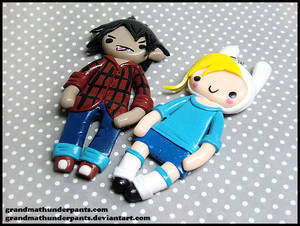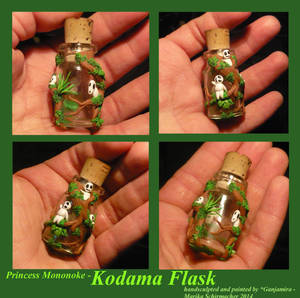Shameless plug: Use this referral link when opening up your Etsy store and get 40 free listings (and you'll get me 40 free listings too! Thanks!).
Introduction to setting up your store
I have been there, deciding to sell your work is a scary decision. What do I do? How do I sell? How do I accept money? What do I do so that I don't lose money? What if no one buys my work? I went through every emotion and scary thought before I began. Three years after I opened my store I finally feel comfortable giving advice about it. This is a huge topic and I could write tons of info about it, so I'll begin with this introduction and build up on future articles. I will also write a second article about taking commissions, wait for it later this week!
Last year I wrote some guidelines with some more information about selling your work online, please consider reading it too! This article will focus on setting up your store.
Disclaimer: I'm not the most successful online seller, and I don't intend to be - I'm pretty busy with my studies, and most of my business comes from custom commissions, not my shop. I included a lot of my personal experience, conversations with friends, and things I've noticed from watching other sellers. Still, I hope this will be helpful.
Build a reputation.
In the interwebs, no one can see you. You can't trust what you can't see, and people are going to be careful with their money. A big chunk of the people that ask me why they're not successful fail at this step, people are a lot more likely to buy things from artists they know and like.I began making polymer clay art for fun, and posted it in DA for feedback (and to showoff
Tips:
- Have a strong online presence. Fill your gallery with your work, post often, comment on other people's work, answer comments, write journals about your life (tastefully), etc. Make sure people know you're a person.
- Make sure everything you do is of the best quality possible! You want to build a good reputation for selling quality work, not a bad one.
- Don't expect people to come throwing money at you, it takes time to build a reputation.
Know (and love) your work.
Also, make sure that you know what are the best traits of your work, and love them. Maybe your wire is perfectly wrapped without any dents or marks, or your amigurumi is posable and can stand on its own. It's okay to brag!! There's a lot of competition and you want to stand out, so know your strengths and highlight them. But don't lie or exaggerate, it can ruin your reputation.
I'm using my polymer clay work as an example again: my customers often have questions about how strong the material is, if it'll be heavy on earrings, if I can create certain shapes, if the colors will fade, or if it will get damaged with water or sweat. Anticipate any questions your clients can make, and know the answers.
Tip:
- Your friends and family are great test groups! When I create something new, or when I use a new material, I give it away to them and ask them to try it for a few weeks. They tell me if it's comfortable to wear, if it breaks, what can I improve, etc.

Set prices. And set them right.
Please, never never never never underprice your work. You're putting your time, heart and soul in every creation, so don't sell yourself cheap. I often see new and young artists underpricing their work, and it pains me. The logic is understandable: they believe that by setting cheap prices they'll be more likely to attract customers, but this is not always true. Buyers will often believe that cheap price=cheap product, so anything too cheap is dismissed as a bad product. This reputation will be difficult to shake it off once your business begins getting more serious. So get your prices right from the beginning! Consider the cost of the materials (include the price for ordering them online, driving or taking a bus to get them), the time you spend working on every item, the tools and wear caused to them, fees from your credit card or Paypal, any resources you need (if you use an electric oven as part of your process, and you're paying the light bill yourself, you have to add it up to your final price), etc. Even if this is just your hobby, don't underprice yourself! If you don't respect yourself and your own work, no one will.
GrandmaThunderpants explains further why you should never undercharge, and gives you tips to set your prices. Check her article here!
Know your options
So you got a reputation and a following interested in your work, you have practiced and you're sure that your product is worth selling, and you have a good idea of how much you need to charge to make a decent profit. Great work so far! Now you need a way to receive payments and some place to host your store.The most popular options are using PayPal to receive and manage payments, and Etsy to host your store. These two options are trusted and well known by most people, but they're not the only options. I'm going to mention them briefly for know, and I'll work on a more intensive article later.
To receive payments
- Paypal: Well known and trusted, most people already have an account. Read their rules and documentation to protect yourself as a seller, and set your account as "Business" or "Premier". Make sure that you understand their fees and check them often, as they like to raise them every once in a while. Paypal fee's are usually the highest, and there's many horror stories surrounding them.
- Other online options: There's a lot of options to Paypal, their fees are usually lower but I have yet to meet anyone asking me to receive payments through them. WePay and Braintree are two of the largest, or you can even use Amazon. Google Checkout was a popular alternative to Paypal, but it was retired last year. If you decide to use Etsy, your clients can use their credit card to checkout securely, as if they were using Paypal.
- Bank deposits: (May not work in every country) I accept bank deposits from people living in my same country because I don't have to pay any fees
 Check with your bank to find out how to do it! You may be able to accept deposits from other countries, but the fees are usually insane.
Check with your bank to find out how to do it! You may be able to accept deposits from other countries, but the fees are usually insane.
To host your store
- Etsy: Etsy is sometimes a necessary evil. It's popular and it has a lot of traffic, so placing your work there gives you a better chance to be seen. Their fees are among the highest, they constantly make updates that make no sense, they will try to extract every penny from you and they don't offer any customization, but more than once I've seen people run back to Etsy after their sales drop. Just like Paypal, make sure to read their documentation to protect yourself as a seller and avoid scammers. Etsy will let you receive payments via Paypal, check, gift cards, and will let your clients pay directly with their credit card.
- Storenvy: This is an interesting alternative to Etsy that is gaining popularity. Storenvy charges NO FEES at all and they allow you to fully customize your storefront, so you can easily blend Storenvy with your website. They set no ads, but they charge for additional functions (like advanced coupon codes). Storenvy will only let you receive payments via Paypal. I wish Storenvy was more popular since I really like their model, but so far I've only sold ONE item there
 2016 edit: Storenvy now charges a 10% fee when something is bought through their marketplace, but sales through your store front are still free.
2016 edit: Storenvy now charges a 10% fee when something is bought through their marketplace, but sales through your store front are still free. - Artfire: Artfire used to be completely free like Storenvy, but later changed to charging $15 per month, no matter how much you sell. If your Etsy fees get unbearable, and for some reason Storenvy is not an option, you can consider Artfire. Personally, I dislike Artfire since I once tried to setup a store to try it, but their system kept crashing every time I tried to pay for my first month. I contacted their customer service and they were very unhelpful, and I have a policy against giving my money to people that won't help me give it to them XD
- Other options: I know some people use Ebay successfully, it's huge and it has lots of traffic, but there's a lot of competition. Dawanda is popular with European crafters. You can also choose to use Paypal's checkout service and manage your own store in your blog or webpage, but it requires more time to setup.
Never trust your portal service
Find out in advance how much it will cost to ship everything, you don't want to pay for shipping yourself! Most postal services have a webpage with prices, but I advice you to go and ask in person. The information can be outdated, inaccurate, or your lovely craft may be an exception.
Find out how they'll ask you to prepare your package, and decide what's the cheapest and best materials to use. Small and flat items can be shipped in bubble envelopes, but larger items will require boxes. Some postal services will ask you to use special boxes, others will let you use recycled boxes (raid the supermarket). None of them will let you use boxes that used to contain eggs, chicken, perishable items or alcohol. In Mexico, they even require us to wrap the box with a specific color of a specific paper ![]()
They may not let you ship anything that contains glass (I can't). They may require you to insurance jewelry or any expensive items, so consider it when you're setting your prices and shipping costs. Ask often about changes, postal service offices don't work the same way the rest of the world does.
Tips
- Practice! Send gifts to some friends in different countries or try a couple of art trades. That way you'll know how long it takes for your packages to arrive to a different country, how much it was, how to prepare your package, and you'll know if anything broke or got damaged in transit from a friend, not an angry client.
- Ask your friends and family to save bubble wrap or boxes for you. Everyone was more than happy to help me and I've never had to buy wrapping materials
 and you're recycling too!
and you're recycling too! - If you're planning to sell for a long time, get a small scale to weight your products.
Decide your business model
There's several options for you to choose, or you can do a mix of everything. Think ahead of time how long it takes you to create an average item, how much time you have to spare from your other activities, how much interest there's in your work, if it's more efficient to craft on batches, etc.
- Selling from a stock: You can make a stock, that way you'll be able to ship your sales immediately. It's a good choice if you have periods of time with few things to do followed by busy months. A great option for students with time to spare on vacations.
- Selling on demand: List things in your store, and craft them once they sell. This is a good option if you're not sure how well every item is going to sell, if you use expensive materials, or if you don't have the space to store a stock. If some items sell better than others, it may be a good idea to create a stock of them.
- Selling as you craft: If every craft you create is unique, you can't sell them on demand or from a stock. You'll craft what your inspiration dictates you, take photos, and put it up in your store.
- Selling on commission: Taking commissions is a whole different thing, and I'll cover that in my next article to be published this week.
Promotion
Even if people expressed interest in your work in the past, don't expect them to start throwing money at you immediately. Be patient, most stores will take months (or even years) to pick up and get regular sales. Some ge reallyt popular really fast, but they're exceptional cases.
Please don't open your store and think that your work is done, it has just begun. There's a lot of competition online, and people are not going to randomly type your name and find you. You'll need to do a lot of work to promote your store: post updates and more samples of your work often, use social networks wisely, if you have the money you can even buy advertisement.
Post the link to your store in your submissions, profile, Facebook page, make your store easy to find! Some sellers often forget to use the keywords, they'll help potential clients find you. Do whatever you can to promote your store, and don't give up! Be patient.
Conclusion
Opening a store is a very complex process, a lot more complex than I initially believed. If you think it's easy, I ask you to think it over and do more research. It's not as easy as trying a craft for a few months, realize that there's other artists selling it, open an Etsy account and believe that you'll be rich in no time. If you do that, you'll only be loosing money and time. It takes patience, lots of time, and hard work.This article got really long really quick, and I believe I barely scratched the surface. I tried to cover the very basics without going too in depth. I have a lot more to say about every subject, and I'll try to write more articles in the future. Please let me know if you have any questions or suggestions!








